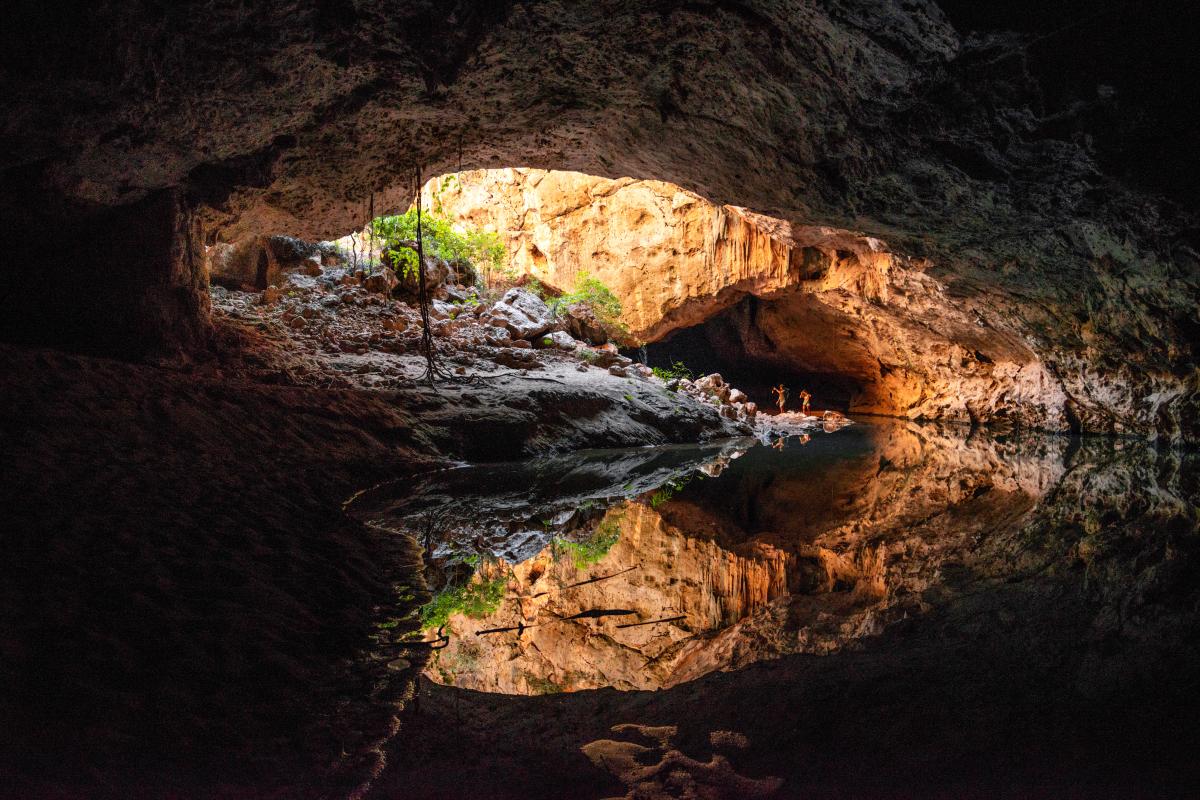About this park
At Dimalurru (Tunnel Creek) water has carved a large tunnel through the limestone of the Napier Range. The tunnel is up to 20m high and 15m wide in some parts! 350 million years ago this was part of an ocean reef system.
There is a Kimberley feel all-around. Sunlight arcs onto the cathedral-like cavern with a sense of mystery. Adding to the spectacle, large stalactite rock formations hang from the walls.
A deep history, as well as beauty exists here. It was used as a hideout late last century by the Aboriginal leader Jandamarra who was killed outside its entrance in 1897.
Take a walk through the 750m tunnel which takes you from one side of the Napier Range to the other. Keep your eye out for the many bat species and freshwater crocodiles that live in the cave. The roof has collapsed through to the top of the range near the centre of the tunnel. Take a torch, wear sneakers and be prepared to get wet and possibly cold and always let someone know where you are.
Day trips to Dimalurru (Tunnel Creek) operate from Derby, Fitzroy Crossing and Broome and often include a visit to Bandilngan (Windjana) Gorge.
You’ll never forget a walk into the tunnel of surprises. It's Crocodile Dundee and Indiana Jones all in one spot!
Please respect any Aboriginal paintings by not touching the art works.
Safety information
Plan when to visit. Read this safety information about bushwalking. Consider traveling with a personal location beacon (PLB). In the event you need to be rescued it could save your life!
Crocodiles
When you are entering the Kimberley or Pilbara regions, you are entering crocodile country.
Two species of crocodile occur Australia: the estuarine (saltwater) crocodile and the freshwater crocodile. Both species can be found across the north of WA.
Crocodiles are dangerous and attacks can be fatal.
Take the Crocodile Guide with you.
Crocodiles can still be around even if there are no signs. They can stay hidden underwater for a long time and will see you before you see them.
If you see a crocodile showing signs of aggressive behaviour to people or posing a risk to public safety, please contact your nearest Parks and Wildlife Service office.
WiFi
Campgrounds have free WiFi for campground users.
Mobile phone and internet
Phone coverage is intermittent in the region. Check with your service provider before you go. A satellite phone is recommended.
Heat
Temperatures be extreme, exceeding 40°C during the day. When walking in the park wear a hat, long sleeve loose clothing, broad spectrum sunscreen and sturdy walking shoes.
Carry and drink 1 litre of water per hour of walking per person. Avoid dehydration by drinking small amounts regularly.
Remote vehicle considerations
Check your vehicle before departing and prepare it for remote locations and off road driving. Travelling in remote locations | Explore Parks WA
Travel plans
Always tell someone where you will be heading. For your own safety, please remain on existing tracks and trails.
Gallery

Activities
 Bushwalking
Bushwalking
Plants, wildlife and fungi
Visit the Atlas of Living Australia for a list of species recorded in Dimalurru (Tunnel Creek) National Park.
Traditional Owners
We recognise and acknowledge Bunuba people as the Traditional Owners of Dimalurru (Tunnel Creek) National Park.